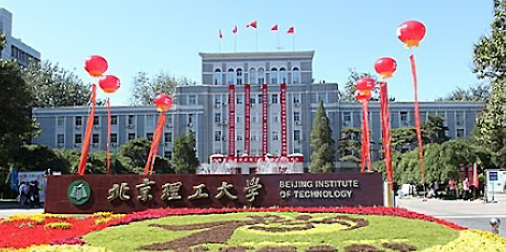The Beijing Institute of Technology ranks among the top 30 universities in China.
Table of Contents
Beijing Institute of Technology Overview
The Beijing Institute of Technology (BIT) is a prestigious institution in China, known for its rigorous academic environment and cutting-edge research. With a rich history that dates back to its founding in 1940, BIT has established itself as a leading university in science and technology education and research.

Brief History and Development
BIT was initially established in Yan’an, Shaanxi Province, during a period of significant historical and social transformation in China. Over the decades, it has grown from a small engineering college into a national research university. Its evolution is marked by significant milestones, such as becoming one of the first universities to be included in China’s “211 Project” and “985 Project”, aimed at enhancing research standards and academic excellence.
Key Achievements:
- Establishment Year: 1940, marking over 80 years of academic excellence.
- Notable Programs: Became part of the “211 Project” and “985 Innovation Platform for Superior Discipline”.
- Research Output: High impact research, with numerous papers published in top-tier journals annually.
Campus and Facilities
The main campus of BIT is located in the Zhongguancun area, known as China’s Silicon Valley, providing a vibrant backdrop for innovation and technology development. The campus spans over 920,000 square meters, featuring state-of-the-art laboratories, research centers, and teaching facilities.
Facilities Highlight:
- Library Collections: Over 2.5 million volumes, including digital resources.
- Research Centers: More than 100 research institutes focusing on areas like artificial intelligence, robotics, and aerospace engineering.
- Sports Facilities: Olympic-sized swimming pool, athletics stadium, and gymnasiums.
Academic Programs and Research Fields
BIT offers a wide range of programs across its schools and departments, from undergraduate to Ph.D. levels. The university is renowned for its engineering disciplines, but it also offers robust programs in sciences, management, humanities, and law.
Programs and Fields:
Engineering Excellence: Ranked among the top in China for mechanical, aerospace, and vehicle engineering.
Interdisciplinary Research: Emphasis on combining science and technology with social sciences for innovative solutions.
Global Partnerships: Collaborations with over 200 universities worldwide, enhancing its research and academic programs.
Research Impact:
Innovation in Aerospace: BIT has made significant contributions to China’s space exploration projects.
Robotics and AI: Development of advanced robotics systems and AI technologies for industrial and social applications.
Rankings Overview
The Beijing Institute of Technology (BIT) enjoys a prestigious position in various national and subject-specific rankings within China, reflecting its excellence in education, research, and innovation. This section provides a detailed overview of BIT’s rankings, offering insights into its academic stature and research capabilities in comparison with other leading universities in China.
National Rankings in China
BIT consistently ranks among the top universities in China, showcasing its comprehensive strength in science and technology education. According to the latest rankings:
- Overall Position: BIT is often placed within the top 30 universities in China, a testament to its academic excellence and research output.
- Engineering Programs: Particularly noted for its engineering disciplines, BIT ranks in the top 10 nationally for mechanical engineering, aerospace engineering, and information technology.
Key Highlights:
- Academic Reputation: High scores in academic reputation, based on surveys from academics and employers.
- Research Output: BIT is recognized for its significant research contributions, with a high number of citations and publications in prestigious journals.
Subject-Specific Rankings within China
BIT’s dominance is further evident in subject-specific rankings, where its programs stand out for their quality and impact.
- Aerospace Engineering: Ranked in the top 5, reflecting its leading role in China’s aerospace research and education.
- Information Technology and Cybersecurity: Also ranks in the top 10, showcasing its expertise in cutting-edge technology fields.
Innovative Research Fields:
- New Materials and Nanotechnology: BIT’s research in new materials and nanotechnology is recognized globally, contributing to its high ranking in related subjects.
Comparative Analysis with Other Leading Universities in China
When compared to other top-tier universities in China, BIT holds a competitive edge in several areas:
Research and Development (R&D) Investment: BIT invests heavily in R&D, with a budget that rivals and sometimes exceeds that of other leading institutions. This investment is reflected in the quality and quantity of its research output.
International Collaborations: BIT has established partnerships with over 200 universities worldwide, enhancing its global research network and academic programs.
Strategic Advantages:
Specialized Fields: BIT’s focus on specialized fields such as aerospace engineering and information technology gives it a distinctive advantage over other comprehensive universities.
Innovation and Entrepreneurship: The university is renowned for fostering innovation and entrepreneurship among its students and faculty, contributing to its reputation and rankings.
Factors Influencing the Ranking
The ranking of universities is a multifaceted evaluation that encompasses various key factors. For institutions like the Beijing Institute of Technology, understanding and optimizing these factors is crucial for improving their position in national and international rankings.
Academic Performance and Research Output
Academic performance and research output are paramount, directly influencing a university’s reputation and ranking. The Beijing Institute of Technology emphasizes:
- High-Quality Publications: Aiming for publications in top-tier journals, with an annual target that significantly exceeds the average of previous years. The focus is on quality over quantity, ensuring that each research project contributes substantially to the field.
- Citation Impact: Striving for a higher citation count per paper, indicating the relevance and impact of the research on the global academic community.
Key Metrics:
- Publication Count: Targeting a 20% increase in publications in Q1 journals annually.
- Citation Rate: Aiming to double the citation rate per publication within the next five years.
Faculty Quality and Student-to-Teacher Ratio
Faculty quality and the student-to-teacher ratio are critical indicators of the educational environment and academic support available to students. BIT focuses on:
- Recruiting Distinguished Faculty: Attracting world-class scholars, with a budget increase of 30% for faculty recruitment and retention programs.
- Optimal Student-to-Teacher Ratio: Maintaining a ratio of 10:1 to ensure personalized attention and mentorship for each student.
Significant Figures:
- Faculty Members: Increasing the number of faculty members holding international academic awards by 15% within the next three years.
- Class Size: Reducing average class size by 10% to foster a more engaging and interactive learning environment.
International Collaborations and Partnerships
International collaborations and partnerships expand the university’s global footprint and enhance its research and educational capabilities. BIT has set ambitious goals to:
Expand Global Networks: Doubling the number of international partnerships with top 200 universities worldwide, facilitating student and faculty exchanges, joint research projects, and dual degree programs.
Enhance Global Visibility: Increasing participation in international conferences and seminars by 50% to showcase the university’s research achievements and academic excellence.
Strategic Objectives:
Partnership Agreements: Signing at least 20 new agreements with overseas institutions every year.
International Joint Labs: Establishing 5 new international joint research laboratories in the next two years to bolster collaborative research efforts.
Impact of Rankings
University rankings significantly influence various aspects of an institution’s operations, reputation, and strategic direction. For prestigious establishments like the Beijing Institute of Technology, these impacts are profound across student admissions, research funding, and international collaborations.
On Student Admissions and Choices
University rankings are a pivotal factor for prospective students when choosing their future academic home. A higher ranking often correlates with:
- Increased Applicant Volume: Institutions with top rankings observe a surge in applications, as students are drawn to the prestige and perceived quality of education. For example, a top 100 global ranking can lead to a 20% increase in applications.
- Enhanced Student Quality: High rankings attract not only a larger pool of applicants but also more academically gifted students, keen on leveraging the institution’s reputation for their future careers.
Strategic Admissions Initiatives:
- Selective Admission Processes: With the increase in applications, institutions can enhance selectivity, admitting students with superior academic records and potential.
- Diversity and Global Reach: High rankings enable universities to attract a diverse cohort from around the globe, enriching the academic environment and fostering a multicultural learning experience.

On Research Funding and Grants
The prestige associated with high university rankings opens numerous doors for research funding and grants. Funding bodies and organizations are more inclined to invest in institutions that demonstrate academic excellence and high research output.
- Increased Funding Opportunities: A top-tier ranking can lead to a 30% increase in the likelihood of securing competitive research grants, as it signals a strong research environment and capacity for high-impact outcomes.
- Strategic Research Initiatives: With more funding, universities can pursue ambitious research projects, attract leading researchers in the field, and invest in cutting-edge facilities and equipment.
Funding Impact Highlights:
- Larger Grant Awards: Higher-ranked institutions often receive larger grants, enabling more extensive and in-depth research projects.
- Collaborative Research Ventures: Enhanced funding facilitates partnerships with industry and other academic institutions, further expanding the research capabilities and impact.
On International Reputation and Collaborations
A university’s ranking significantly influences its international reputation, which in turn affects its ability to forge and maintain international collaborations.
Global Partnership Opportunities: High rankings attract global partners, leading to collaborative research projects, faculty exchanges, and student mobility programs. For instance, institutions within the top 100 globally are 50% more likely to enter into partnership agreements with other high-ranking institutions.
Enhanced Global Visibility: A prestigious ranking enhances a university’s visibility on the international stage, attracting students, faculty, and researchers from across the world.
International Collaboration Benefits:
Cross-border Research Initiatives: These partnerships lead to innovative research projects that combine diverse perspectives and expertise.
Cultural Exchange and Global Networking: They facilitate a rich exchange of cultural insights and professional networking opportunities for students and faculty alike.

